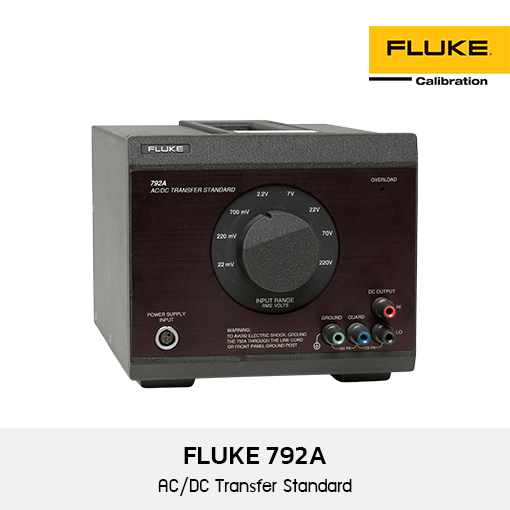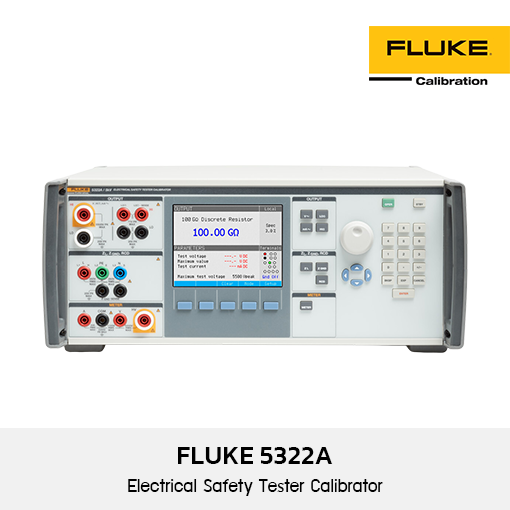Overview
- Accurate, fast and easy to use
- Fully traceable performance
- Nine ranges from 22 mV to 1000V (with external range resistor)
- Visual and audible alert warns of approaching overload condition
- Input connector located on rear panel
- Two volt (full scale) output permits the use of a high resolution digital multimeter to simplify transfer measurements
- External power supply makes bench use more convenient and simplifies shipping of the transfer unit for calibration
Accurate, fast and easy to use
At the heart of the 792A is the patented Solid-State Thermal RMS sensor, which has been proven in a variety of Fluke Calibration products since 1979. Its output voltage is 2V, compared to the 7 to 10 mV output of traditional thermocouples. That means the 792A exhibits excellent signal-to-noise characteristics and minimal reversal errors as low as 10 ppm relative to input voltage. The 2V output also permits you to make measurements with high resolution so you can use a digital voltmeter rather than a null meter to make transfers. Not only are measurements easier to make, they are more precise as well. And because it is small, the RMS Sensor has very low thermal mass, so the 792A stabilizes in as little as 30 seconds and can be used over a wide temperature range of 11° C to 35° C. The RMS Sensor is designed to be rugged and reliable. Each is built to exacting standards by the Fluke Microelectronics Operation to maintain quality and consistency, part after part.
Fully traceable performance
Each 792A is shipped from Fluke Calibration with a certificate of calibration. Included is a table of correction factors and uncertainties for measured ac/dc differences.
To support the traceability requirements for an instrument as accurate as the 792A, the Fluke Calibration Metrology Department developed a unique system to transfer national laboratory values to the 792A production environment. This system is based on proven techniques developed to maintain a 732A direct voltage standard to within a few parts in 100 million. Statistical treatment of data resulting from successive intercomparisons of virtually identical 792As is used to minimize transfer uncertainties. To achieve even higher performance, you can have the transfer uncertainties of your 792A assigned directly by any national standards organization.
Periodic calibration and recertification is available from Fluke Calibration. This service repeats the original calibration procedure. A new table of correction factors and uncertainties for measured ac/dc differences is returned with your instrument. Order 792A-000.










